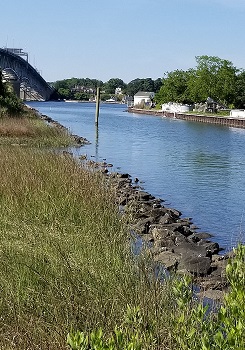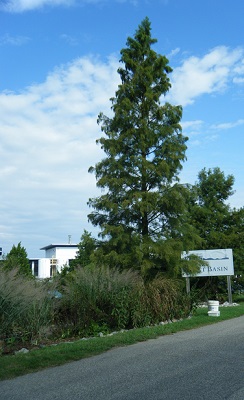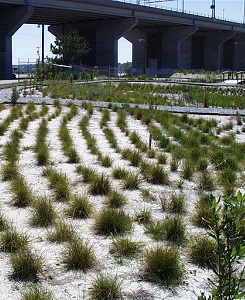Living Shoreline Practices
Living Shorelines are erosion control methods that use natural features to stabilize soil and reduce the energy of waves running up on the shore. These techniques are most effective where wave action and boat wakes are not severe and there is plenty of sunlight.
The Teaching Marsh has three examples of living shoreline practices. Non-structural living shorelines rely on wide, gentle slopes and planted vegetation to reduce wave energy and erosion. Structural living shoreline practices include strategically placed materials to support living habitats where they would not persist alone.
Riparian Buffer
a planted upland area next to tidal marsh with salt-tolerant native trees and perennials- Intercepts and filters stormwater runoff from adjacent road
- Reduces energy of tidal floodwaters during extreme high tides and coastal storms
- Provides habitat and food sources for aquatic and terrestrial wildlife
- Low-maintenance garden with dynamic plant arrangement, self-seeding, selective weeding and no reasons to use pesticides or fertilizers
See Also – Riparian Buffers & Bay Friendly Gardens
Planted Salt Marsh
a planted wetland area with native salt marsh plants
- Wide, gradual slope provides space for planting low & high marsh zones
- Natural recruitment of additional marsh plants over time
- Essentially self-maintaining with occasional trash removal

Marsh with Stone Sill
a low-profile structure used to support a planted tidal marsh next to deep boat channel
- Low height allows for high tides to regularly overtop structure while boat wake energy is also reduced
- Spaces between stones makes structure pervious for tidal waters to flow in and out of marsh
- Crabs, fish and other marsh residents are thriving in this created marsh habitat
Read More – CCRM Living Shorelines



